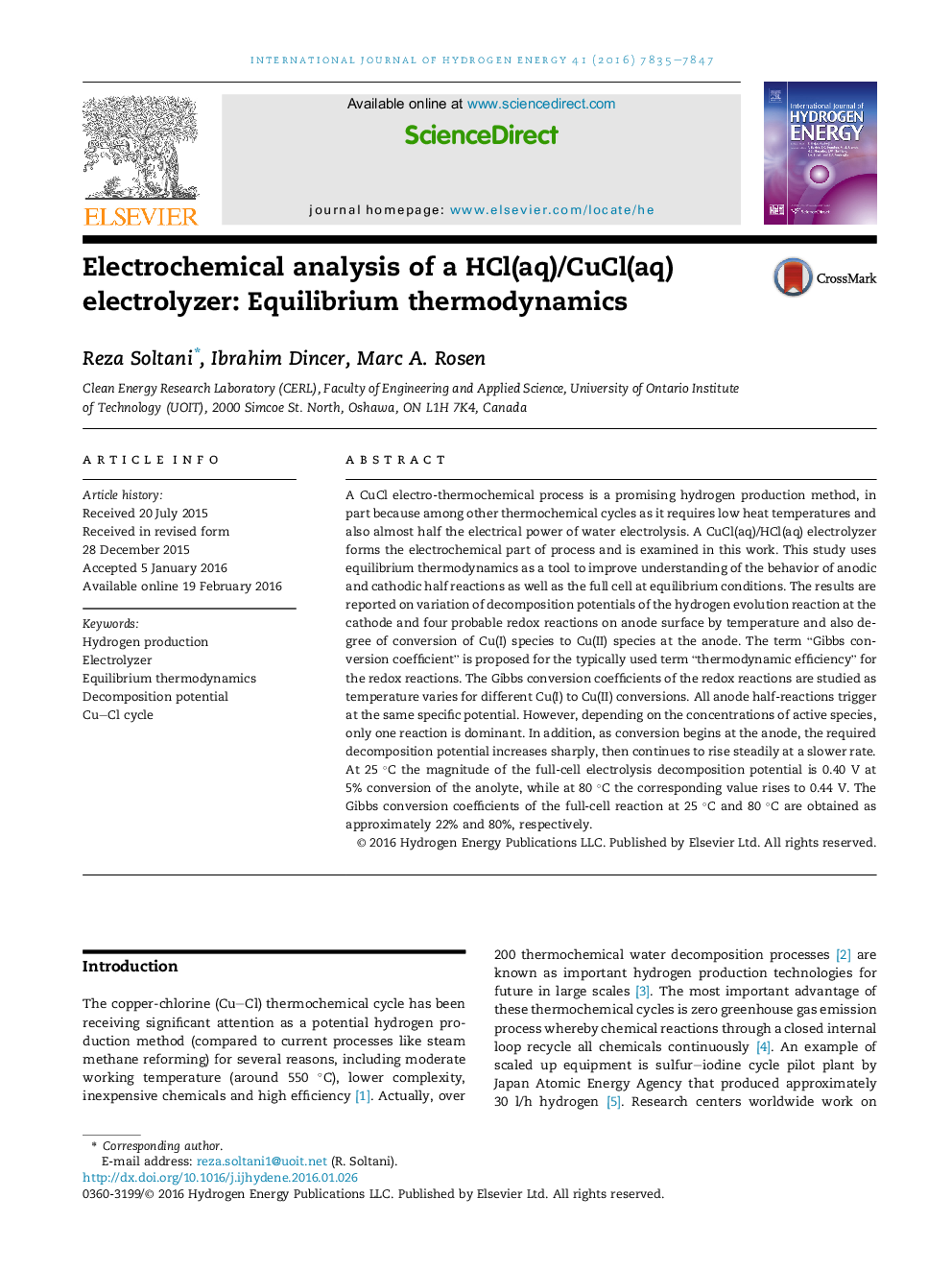| کد مقاله | کد نشریه | سال انتشار | مقاله انگلیسی | نسخه تمام متن |
|---|---|---|---|---|
| 1277277 | 1497406 | 2016 | 13 صفحه PDF | دانلود رایگان |

• The term “Gibbs conversion coefficient” is proposed for efficiency assessment.
• All anode half-reactions trigger at the same specific potential.
• As conversion begins at the anode, the decomposition potential increases sharply.
• A higher cell temperature results in a higher cell decomposition potential.
A CuCl electro-thermochemical process is a promising hydrogen production method, in part because among other thermochemical cycles as it requires low heat temperatures and also almost half the electrical power of water electrolysis. A CuCl(aq)/HCl(aq) electrolyzer forms the electrochemical part of process and is examined in this work. This study uses equilibrium thermodynamics as a tool to improve understanding of the behavior of anodic and cathodic half reactions as well as the full cell at equilibrium conditions. The results are reported on variation of decomposition potentials of the hydrogen evolution reaction at the cathode and four probable redox reactions on anode surface by temperature and also degree of conversion of Cu(I) species to Cu(II) species at the anode. The term “Gibbs conversion coefficient” is proposed for the typically used term “thermodynamic efficiency” for the redox reactions. The Gibbs conversion coefficients of the redox reactions are studied as temperature varies for different Cu(I) to Cu(II) conversions. All anode half-reactions trigger at the same specific potential. However, depending on the concentrations of active species, only one reaction is dominant. In addition, as conversion begins at the anode, the required decomposition potential increases sharply, then continues to rise steadily at a slower rate. At 25 °C the magnitude of the full-cell electrolysis decomposition potential is 0.40 V at 5% conversion of the anolyte, while at 80 °C the corresponding value rises to 0.44 V. The Gibbs conversion coefficients of the full-cell reaction at 25 °C and 80 °C are obtained as approximately 22% and 80%, respectively.
Journal: International Journal of Hydrogen Energy - Volume 41, Issue 19, 25 May 2016, Pages 7835–7847